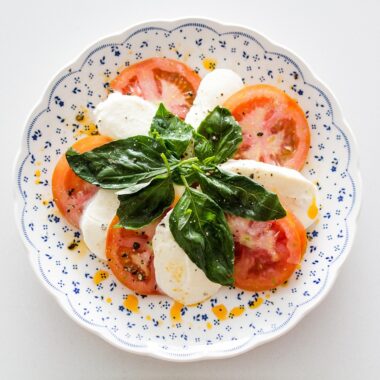When it comes to home cooking, nothing elevates a dish quite like the addition of fresh herbs. Their vibrant flavors, aromas, and nutritional benefits make them a must-have for any culinary enthusiast. The best part? You don’t need a sprawling garden to grow them. Many herbs thrive indoors, making it possible to cultivate a mini herb garden right in your kitchen. This guide will explore the best herbs to grow in your kitchen, their benefits, and tips for growing them successfully.
Why Grow Herbs in Your Kitchen?
Growing herbs in your kitchen has several advantages:
Freshness: You’ll always have fresh herbs at your fingertips, enhancing the taste and quality of your meals.
Cost-Effective: Homegrown herbs can save money compared to store-bought alternatives.
Convenience: No need for last-minute trips to the store when a recipe calls for a sprig of basil or a handful of parsley.
Aesthetic Appeal: A kitchen herb garden adds a touch of greenery and liveliness to your cooking space.
Health Benefits: Fresh herbs are packed with vitamins, antioxidants, and medicinal properties.
The Top Herbs to Grow in Your Kitchen
Basil
Uses: Perfect for Italian dishes like pasta, pizza, and caprese salad. It’s also a key ingredient in pesto.
Growing Tips: Basil thrives in bright sunlight, so place it near a sunny window. Water regularly but avoid overwatering, as it dislikes soggy soil.
Varieties to Try: Sweet Basil, Thai Basil, and Lemon Basil.
Parsley
Uses: A versatile herb used as a garnish or ingredient in soups, stews, salads, and sauces.
Growing Tips: Parsley prefers indirect light and slightly moist soil. Choose between flat-leaf (Italian) or curly varieties.
Health Benefits: Rich in vitamins A, C, and K.
Thyme
Uses: Enhances the flavor of roasted meats, vegetables, and soups. Thyme is also great for herbal teas.
Growing Tips: This hardy herb prefers bright light and well-drained soil. Allow the soil to dry slightly between waterings.
Varieties to Try: English Thyme, Lemon Thyme, and Creeping Thyme.
Rosemary
Uses: Excellent for seasoning meats, potatoes, and bread. Rosemary’s aromatic qualities also make it ideal for DIY potpourri.
Growing Tips: Rosemary thrives in bright, direct sunlight and requires well-drained soil. Be cautious of overwatering.
Additional Benefit: Its needle-like leaves add a lovely texture to your indoor garden.
Mint
Uses: A refreshing addition to beverages, desserts, and savory dishes. Mint is essential for mojitos, teas, and yogurt-based dips.
Growing Tips: Mint grows quickly and prefers indirect light. Keep it in a separate pot, as it can spread aggressively.
Varieties to Try: Spearmint, Peppermint, and Chocolate Mint.
Cilantro (Coriander)
Uses: A staple in Mexican, Indian, and Asian cuisines, cilantro pairs well with dishes like tacos, curries, and salads.
Growing Tips: Cilantro prefers cool temperatures and indirect sunlight. Harvest the leaves regularly to encourage new growth.
Note: Cilantro is fast-growing but tends to bolt (flower and go to seed) in warm conditions.
Chives
Uses: Known for their mild onion flavor, chives are perfect for sprinkling on eggs, potatoes, and soups.
Growing Tips: Chives thrive in bright light and slightly moist soil. Trim them often to encourage growth.
Bonus: The purple flowers are edible and make a beautiful garnish.
Oregano
Uses: A must-have for Mediterranean dishes, especially pizza and pasta sauces.
Growing Tips: Oregano loves bright light and well-drained soil. It’s drought-tolerant, so avoid overwatering.
Varieties to Try: Greek Oregano and Italian Oregano.
Dill
Uses: Perfect for pickling, dill also complements fish, potatoes, and creamy dips.
Growing Tips: Dill needs plenty of sunlight and well-drained soil. Harvest the fronds regularly to prevent flowering.
Health Benefits: Contains antioxidants and is known for its digestive properties.
Sage
Uses: A robust herb ideal for seasoning meats, stuffing, and roasted vegetables. Sage also pairs well with brown butter sauces.
Growing Tips: Sage prefers bright sunlight and well-drained soil. Allow the soil to dry between waterings.
Varieties to Try: Common Sage, Pineapple Sage, and Golden Sage.
Setting Up Your Kitchen Herb Garden
Choose the Right Containers
Use pots with drainage holes to prevent waterlogging.
Consider decorative pots to enhance your kitchen’s aesthetic.
Provide Adequate Light
Most herbs need 6-8 hours of sunlight daily. Place them near a south-facing window or use grow lights if natural light is limited.
Use Quality Soil
Opt for a well-draining potting mix. Avoid garden soil, as it can compact and hinder growth.
Water Wisely
Herbs prefer moist but not soggy soil. Check the soil’s top inch for dryness before watering.
Fertilize Sparingly
Use a balanced, water-soluble fertilizer once a month to provide essential nutrients.
Prune Regularly
Regular trimming encourages growth and prevents herbs from becoming leggy or flowering prematurely.
Tips for Success
Group Herbs by Similar Needs: Place herbs with similar light and water requirements together.
Rotate Pots: Rotate the pots occasionally to ensure even light exposure.
Watch for Pests: Check for signs of pests like aphids or spider mites and address issues promptly.
Harvest Smartly: Use clean scissors to snip herbs, and avoid taking more than one-third of the plant at a time.
Label Your Herbs: Use cute markers or tags to identify each herb, especially if you’re growing multiple varieties.
Creative Ideas for Your Herb Garden
Hanging Herb Planters: Save counter space by using wall-mounted or hanging planters.
Tiered Herb Garden: Use tiered shelves or stackable pots to create a vertical garden.
DIY Mason Jar Garden: Repurpose mason jars for a rustic, charming herb display.
Smart Indoor Gardens: Invest in hydroponic or self-watering systems for a high-tech approach.
Cooking with Fresh Herbs
Using fresh herbs can transform your cooking. Here are some tips:
Add Delicate Herbs Last: Basil, parsley, and cilantro lose flavor when overcooked, so add them at the end.
Infuse Oils and Vinegars: Create herb-infused oils or vinegars for dressings and marinades.
Make Herb Butter: Mix chopped herbs with softened butter for a flavorful spread.
Freeze Extras: Chop herbs and freeze them in ice cube trays with olive oil for later use.
The Joy of Growing Herbs
Growing herbs in your kitchen is more than just a practical endeavor; it’s a rewarding experience that connects you to nature and enhances your culinary adventures. Whether you’re a seasoned chef or a beginner cook, having fresh herbs within arm’s reach can inspire creativity and bring joy to your meals.
With the right care and attention, your kitchen can become a thriving herb haven. So, grab some pots, plant your favorite herbs, and watch your indoor garden flourish!


















